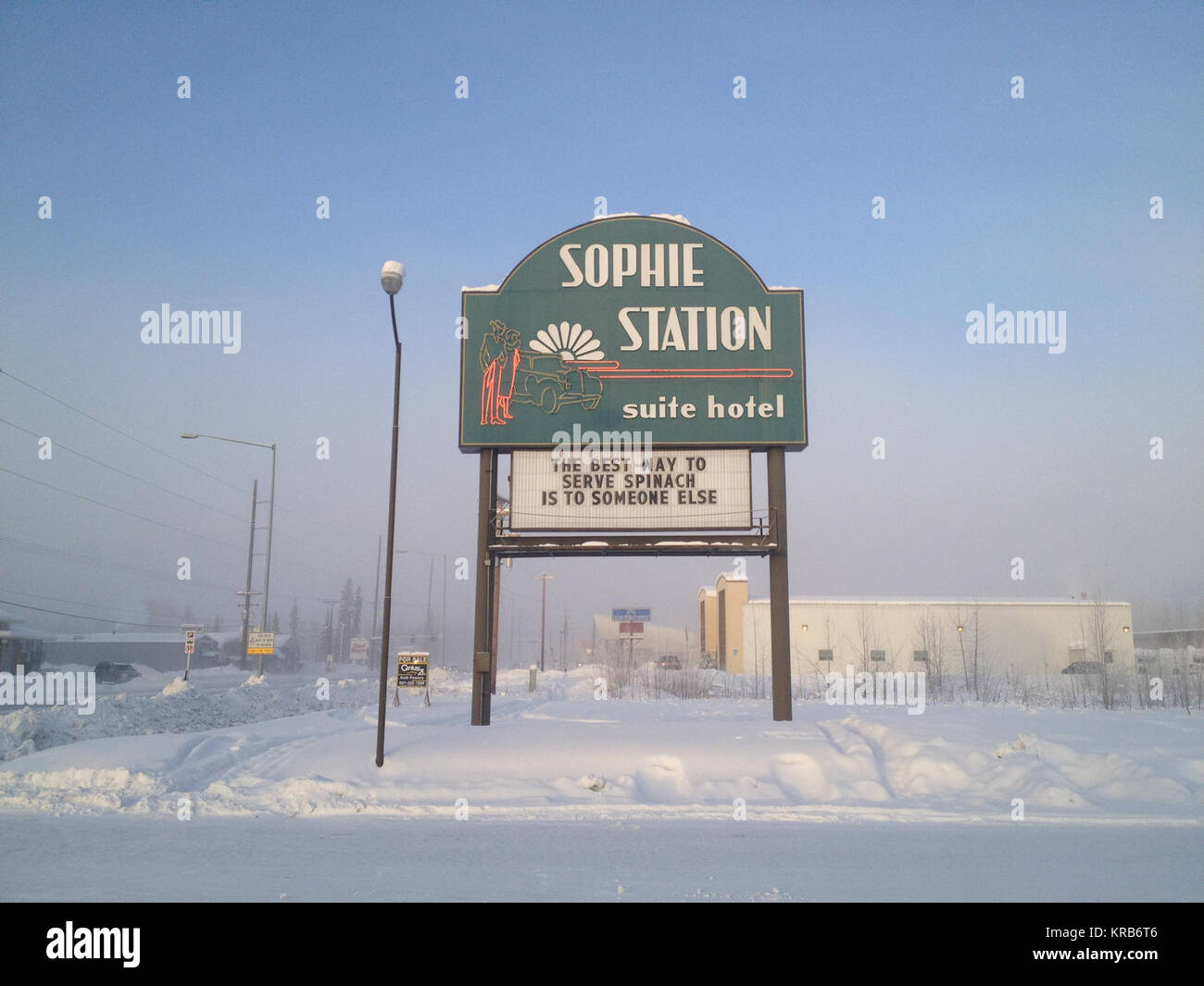The VISIONS team's hotel, on the west side of Fairbanks, Alaska. This picture was taken when the air temperature was -40 C. NASA's VISIONS sounding rocket mission (VISualizing Ion Outflow via Neutral atom imaging during a Substorm) is studying what makes the aurora, and how it affects Earth’s atmosphere. The principal investigator for VISIONS, Doug Rowland, who is a scientist at NASA's Goddard Space Flight Center in Greenbelt, Md. is providing images while the team prepares for launch, which could be any night with a strong aurora between Feb 2. and Feb 17, 2013. Credit: NASA/Goddard/D. R

Image details
Contributor:
NASA Image Collection / Alamy Stock PhotoImage ID:
KRB6T6File size:
7.1 MB (244.5 KB Compressed download)Releases:
Model - no | Property - noDo I need a release?Dimensions:
1825 x 1369 px | 30.9 x 23.2 cm | 12.2 x 9.1 inches | 150dpiDate taken:
27 January 2013More information:
This image is a public domain image, which means either that copyright has expired in the image or the copyright holder has waived their copyright. Alamy charges you a fee for access to the high resolution copy of the image.
This image could have imperfections as it’s either historical or reportage.
The VISIONS team's hotel, on the west side of Fairbanks, Alaska. This picture was taken when the air temperature was -40 C. NASA's VISIONS sounding rocket mission (VISualizing Ion Outflow via Neutral atom imaging during a Substorm) is studying what makes the aurora, and how it affects Earth’s atmosphere. The principal investigator for VISIONS, Doug Rowland, who is a scientist at NASA's Goddard Space Flight Center in Greenbelt, Md. is providing images while the team prepares for launch, which could be any night with a strong aurora between Feb 2. and Feb 17, 2013. Credit: NASA/Goddard/D. Rowland --- To read more about the VISIONS mission go to: http://www.nasa.gov/mission pages/sunearth/news/visions-aurora.html VISIONS: Seeing the Aurora in a New Light A team of NASA scientists arrived in Poker Flats, Alaska at the end of January, 2013. The team is patiently waiting for the exotic red and green glow of an aurora to illuminate the sky. Instead of simply admiring the view, this group from NASA's Goddard Space Flight Center of Greenbelt, Md., and The Aerospace Corporation of El Segundo, Calif. will launch a sounding rocket up through the Northern Lights. The rocket could launch as early as the night of Feb. 2, 2013, but the team has a two-week window in order to find the perfect launch conditions. Armed with a series of instruments developed specifically for this mission, the VISIONS (VISualizing Ion Outflow via Neutral atom imaging during a Substorm) rocket will soar high through the arctic sky to study the auroral wind, which is a strong but intermittent stream of oxygen atoms from Earth’s atmosphere into outer space. The rocket will survive only fifteen minutes before splashing down in the Arctic Ocean, but the information it obtains will provide answers to some long-standing questions. VISIONS is studying how oxygen atoms leave Earth’s atmosphere under the influence of the aurora. Most of the atmosphere is bound by Earth’s gravity, but a small